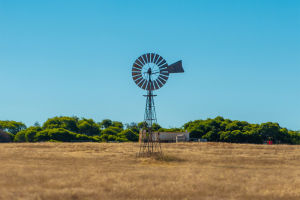Hey Lykkers! Ever dreamed of recording music, podcasts, or voiceovers at home but felt lost when it comes to gear? We totally get it. With so many gadgets out there, it can feel overwhelming trying to figure out where to start.
Don't worry—we're breaking it all down in a way that's easy, clear, and beginner-friendly.
Whether we're creating beats, recording vocals, or just love audio, we all need a few basic tools to get going. Let's walk through the essential equipment and how to choose the right stuff without wasting money.
First, Know What We're Recording
Before we even start buying gear, we should ask ourselves: What do we want to record?
Are we making music? Recording podcasts? Doing voiceovers for videos? Knowing our goal helps us choose the best setup. For example, music producers might need MIDI keyboards, while podcasters will focus more on microphones and sound quality. So let's be clear about our purpose first.
Pick the Right Microphone
The microphone is where it all begins. For beginners, there are two main types:
• USB microphones: These plug straight into our laptop. Super easy, no extra gear needed. Perfect for podcasts, voice recordings, or simple music demos.
• XLR microphones: These are what the pros use. They need an audio interface to connect to our computer, but they offer better sound quality.
If we're just starting, a USB mic like the Blue Yeti or Audio-Technica ATR2100 is a great choice. We can always upgrade to an XLR mic later if we get more serious.
Get an Audio Interface (If Needed)
If we decide to go with an XLR mic or want to record instruments like guitar or keyboard, we'll need an audio interface. It's like a bridge between our mic/instrument and our computer.
Focusrite Scarlett 2i2 or PreSonus AudioBox are solid beginner-friendly options. They give us clean, clear sound and are easy to set up. Make sure the interface connects with our computer (USB-C or USB-A) and has enough ports for our needs.
Headphones Matter More Than We Think
We might think any pair of headphones will do—but when it comes to recording and editing, we need studio headphones, not regular ones.
Look for closed-back headphones to block outside noise while we record. Audio-Technica ATH-M50x or MDR-7506 are favorites among beginners and pros alike. These let us hear details clearly without color or bass boost, so our mix sounds right.
Studio Monitors vs. Speakers
While we can start with good headphones, studio monitors (special speakers for audio work) will help when we get to mixing. They're made to give honest, flat sound so we can hear exactly what's going on.
If we've got room in the budget, a pair like the KRK Rokit 5 or Yamaha HS5 is great. If not, no worries—headphones work fine for getting started.
Don't Forget Recording Software
We'll need DAW software (short for Digital Audio Workstation) to record, edit, and mix. Some great free or low-cost options include:
• GarageBand (great for beginners)
• Audacity (free and easy for podcasts/voice work)
• Cakewalk (free for Windows users, surprisingly powerful)
• Reaper (affordable, full-featured, and used by many pros)
Let's try a few and see which one feels easiest to work with. We're going to spend a lot of time in our DAW, so it should feel natural.
Optional But Helpful Extras
Once we've got the basics, here are a few extras we might want:
• Mic stand: To hold the mic at the right height
• Pop filter: To soften harsh “p” and “s” sounds when speaking or singing
• Foam panels or blankets: For reducing echo if our room is noisy
• MIDI keyboard: If we're into making beats or playing virtual instruments
We don't need all these right away—just add them as we go along.
Set a Budget and Stick to It
One of the easiest traps to fall into is buying too much too soon. Let's keep it simple: decide how much we're willing to spend, and choose one good piece of gear at a time. It's better to buy one solid mic or interface than a bunch of random items we'll replace later.
Let's Build the Sound, Step by Step
Lykkers, starting a home studio is exciting—and it's totally doable, even on a small budget. The trick is to build one piece at a time, learn as we go, and focus on getting better with what we already have.
We don't need the fanciest setup to sound amazing—we just need the right tools and the passion to create. Are you thinking of setting up a home studio? What would you love to record first?
Drop your thoughts—we'd love to hear what you're working on!


